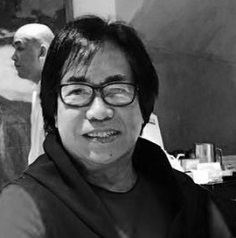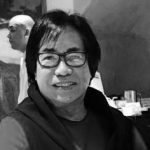wusme
AdministratorRamos BARGE
- Posted in Asia and the Pacific
Description
WUSME AMBASSADOR IN THE PHILIPPINES
Ramos got his start in Manila’s fashion world in the 1970’s working as an apprentice under designer Christian Espiritu after working in various capacities as a writer. After being hired by Espiritu and then opening his own boutique, Ramos’ blossoming period happened, during which he dressed many style icons and celebrities of the time. His formative years and his heyday all occurred during the Marcos martial law era (1972-1986).
In the late 1970’s and into the 1980’s, Ramos heavily experimented with the Barong Tagalog, trying different silhouettes, fits and methods of adornment. He created various length barong designs for ladies, sometimes adding oversized sleeves, oversized collars, billowy skirts, and a sash at the waist. For fabric, Ramos used piña, blended it with cotton and sometimes used indigenous Philippine woven fabrics or foreign fabrics, like Indian sari print silk or Belgian lace. His barongs were the traditional, natural off-white color and some were dyed. Their front designs included traditional calado hand embroidery, silkscreening and hand painting, often depicting Filipino themes, scenes and symbols. In April 1985, Ramos’ 30 piece Barong Tagalog collection was featured in the Ayala Museum as art, which was a first.
After his Marcos martial law era glory days, in the subsequent decades to the present, Ramos has managed to stay busy, current and relevant, keeping an active clientele and showing his creations in fashion shows internationally. Over the course of his career, Ramos was always aiming to innovate how the Barong Tagalog and filipiñiana clothing was made and presented. He continued to generously use native Philippine fabrics and methods of adornment from around the country in his clothing, often blending the traditional with the not-so-traditional.


